- You are here:
- Home »
- Classes
Classes
911Now Training Program Overview
911Now’s training highlights the powerful emotional effects attached to participating in life and death emergency calls. 911Now provides neurobiologys and psychological insights into what can happen to a person’s mind when he/she is caught up in a traumatic situation. The program focuses on stress management, trauma communication, empathy, and team building exercises.
Understanding this psychology can enhance a telecommunicator’s ability to get accurate information from a traumatized caller. 911Now also trains dispatchers to recognize how the pressures of the job can impact them and offers strategies to help manage the stress.
Class greeting and introduction
911Now’s certified psychologist/trainers will give participants a brief overview of what the day’s multi-media presentation will entail. Students will be encouraged to follow along in the 911Now manual – which is theirs to keep – and take notes as the presentation progresses.
Part 1 – Before the Call
What is Trauma and Traumatic Stress
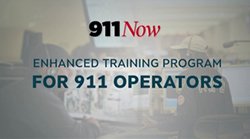 Stressful events – like the ones that can precede a call to 911 – can cause a myriad of personal problems. This part of the training explains trauma and the triggering events, exploring both the psychological and physical changes that occur during stress filled times.
Stressful events – like the ones that can precede a call to 911 – can cause a myriad of personal problems. This part of the training explains trauma and the triggering events, exploring both the psychological and physical changes that occur during stress filled times.
The Brain and Body’s Response to Truama
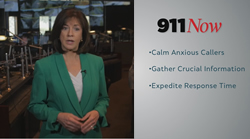 This part of the training fully explores what traumatic events can do to a person’s ability to function, from an inability to clearly articulate thoughts and convey information to the actual physical toll trauma can inflict. It gives students an important glimpse inside the human body and brain as a person experiences a stressful event.
This part of the training fully explores what traumatic events can do to a person’s ability to function, from an inability to clearly articulate thoughts and convey information to the actual physical toll trauma can inflict. It gives students an important glimpse inside the human body and brain as a person experiences a stressful event.
Part 2 – The Call
Effective Communication
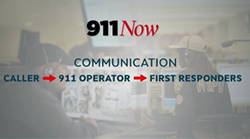 With a better understanding of the stressors a psychologically traumatized person experiences, this section of the training provides strategies and techniques to deal with an emotional caller for faster, more efficient information gathering.
With a better understanding of the stressors a psychologically traumatized person experiences, this section of the training provides strategies and techniques to deal with an emotional caller for faster, more efficient information gathering.
Awareness, Focus and Empathy
The 911Now instructor conducts class exercises designed to help telecommunicators manage the most stressful 911 calls with just the right balance of empathy and authority. Multi-media class participation exercises are employed to help dispatchers fully grasp the behaviors at play — on both ends of the telephone line. Students participate in mock events to demonstrate how chaotic situations can affect mental focus. Recordings of actual 911 calls are utilized to underscore the debilitating effects traumatic incidents can inflict. Take away strategies are offered to help dispatchers perform at their peak.
Part 3 – After the Call
Consequences of Job Related Stress & Frustration
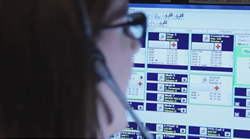 Since 911 dispatchers are constantly exposed to all sorts of community emergencies, they, too, will experience stress. In this section participants will learn techniques to recognize their own particular stress and the effect it has on their minds and bodies – from high blood pressure and muscle tension to depression and headaches.
Since 911 dispatchers are constantly exposed to all sorts of community emergencies, they, too, will experience stress. In this section participants will learn techniques to recognize their own particular stress and the effect it has on their minds and bodies – from high blood pressure and muscle tension to depression and headaches.
Mindfulness and Self Care
Now that students understand the effects of constant exposure to emergency calls, the 911Now training helps develop coping strategies to maintain a healthy work-life balance. This includes changing one’s perspective about stress (make ‘stress’ your friend) and providing morale boosting exercises students can take back to their departments – all with an eye toward minimizing burnout and encouraging team support for those dispatchers who sometimes feel overwhelmed.
Part 4 – Team Building
Team building strategies help the dispatchers build a bond with one another. The dispatchers are working together for one common goal – to help people in distress. That alone can create anxiety. By utilizing team building exercises the dispatchers come together with one voice sharing similar goals, values and concerns.
Part 5 – Question and Answer Section
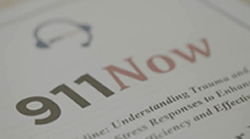 This is an open and confidential Q & A segment. Students are free to ask any and all questions about the training. Participants are invited to share some of their own caller-techniques, team building practices and personal stories of overcoming the inevitable strain of the job.
This is an open and confidential Q & A segment. Students are free to ask any and all questions about the training. Participants are invited to share some of their own caller-techniques, team building practices and personal stories of overcoming the inevitable strain of the job.
Part 6 – Optional Survey
We encourage participants to visit our website and register to take a brief survey about this training presentation. Included is a box to check to give us permission to use your responses in our promotional material. Confidentiality is assured but names are appreciated.
